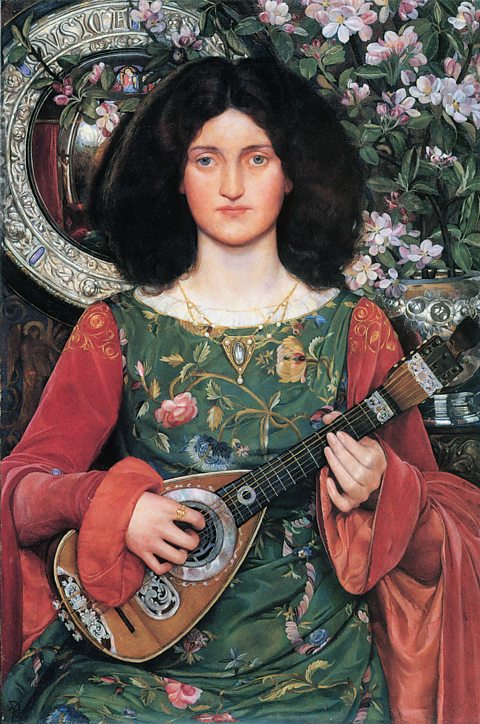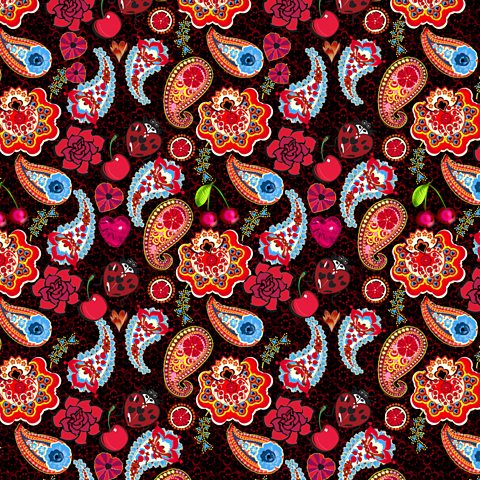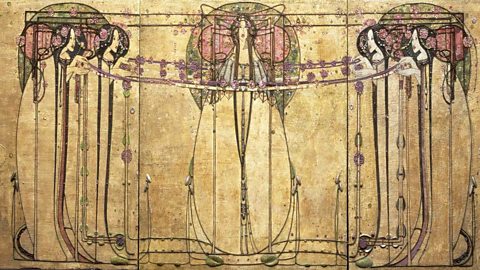Organic shapes
Organic shapes are irregular and imperfect. Naturally these shapes will all be slightly different from one another. They are often curved and flowing and can seem unpredictable.
Using organic shapes can make a piece of art or design seem more natural and real. Still life, portrait and landscape are all genres of art that often feature organic shapes.

In this still life, Samuel John Peploe has painted the apples and flowers as irregular, organic shapes.
Just as in real life, these are imperfect objects. Each is unique and there are subtle differences in their natural shapes and sizes.
The curve and decoration of the vase add more organic shapes to the painting. The straight edges of the table and the pattern of the cloth behind are geometric shapes that add contrast to the composition.


The Pre-RaphaeliteThe Pre-Raphaelites were a group of artists who were inspired by nature and against the idea of creating art that showed things as perfect. group of artists looked to nature for inspiration and attempted to show their subjects with maximum realism.
Melody (Musica) (Kate Elizabeth Bunce, c 1895-97) is in the Pre-Raphaelite style and realistically captures the natural shape of a young woman, her clothes and surroundings.
Additional organic shapes are introduced through the flowers behind her and the floral pattern of her dress.


Paisley pattern is built up of repeating organic shapes. While the pattern repeats in regular blocks, it is made up of irregular twisted teardrop shapes that suggest seeds or other parts of a plant.


The May Queen designed by Margaret Macdonald Mackintosh is a good example of how organic shapes were used in Art NouveauA style of art and design from the 1890s to 1910s that featured long flowing lines and organic shapes and forms. works.
Here human figures, flowers and plant shapes all seem to merge together. Curving lines and shapes are used throughout and create a flowing, unified, organic composition.